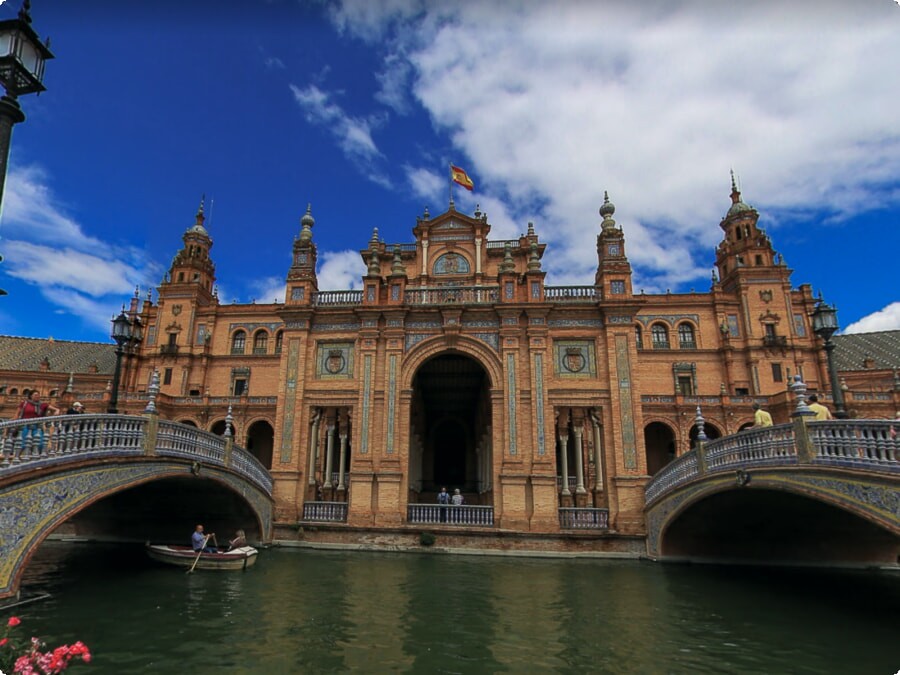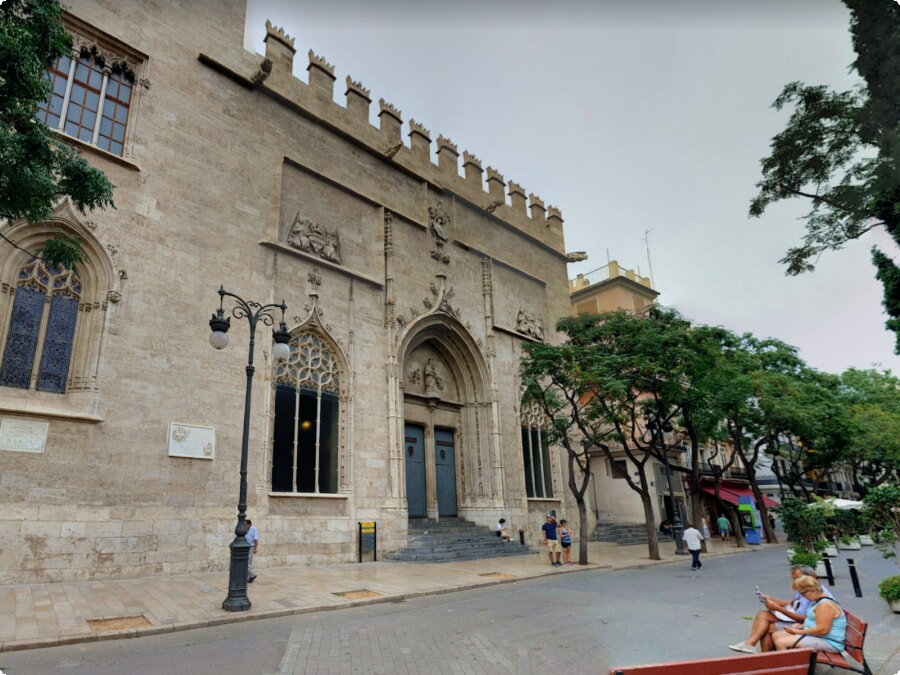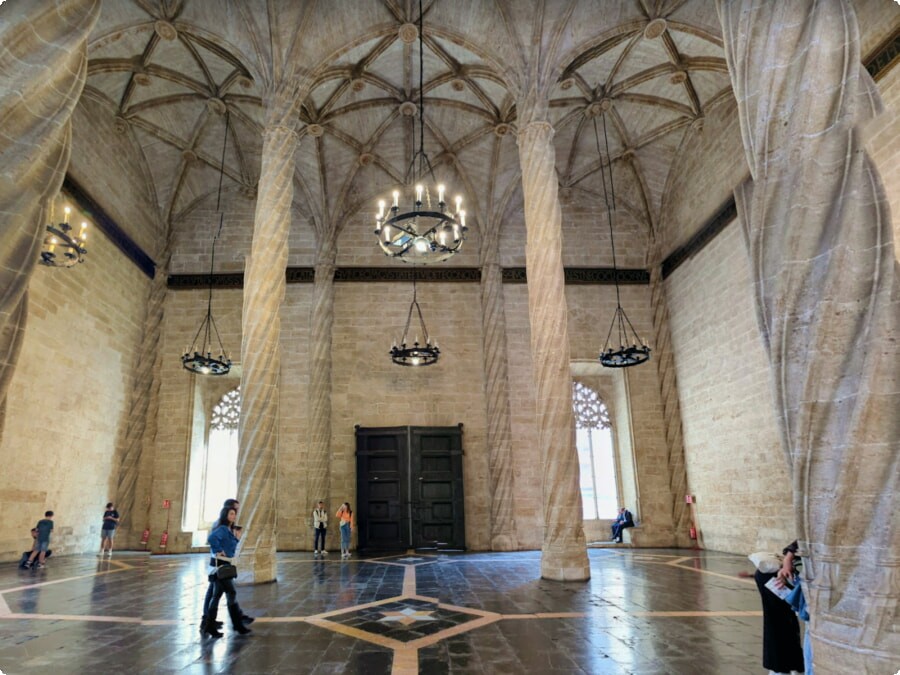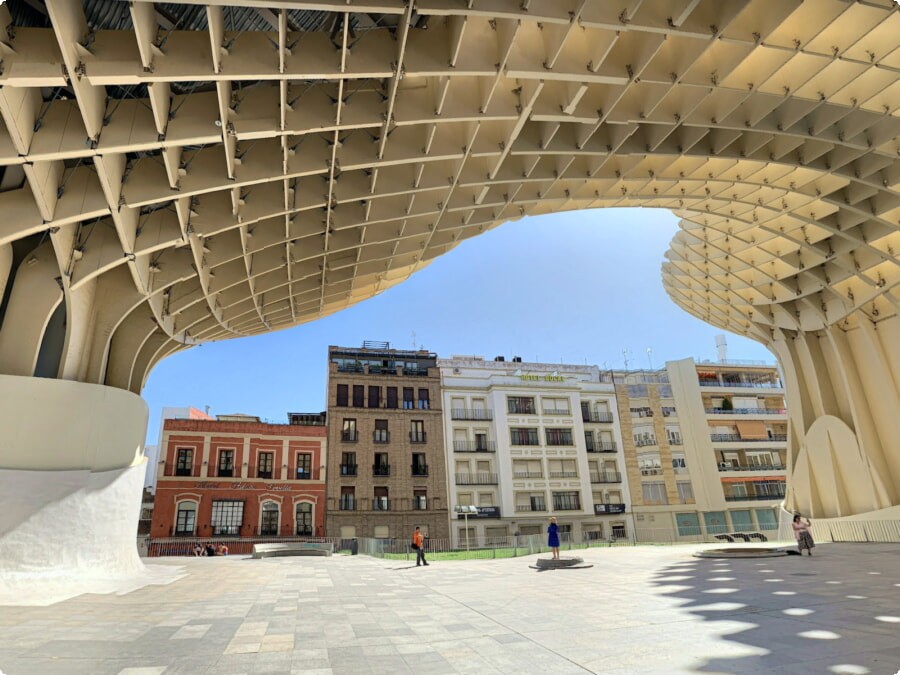Holidays in Spain are an excellent way to experience the country's rich cultures and traditions. Many of these holidays are religious in origin and accompanied by a variety of celebrations.
The Fallas in Valencia is a fun summer fair that features massive statues that are burned at night during an impressive light show. Halloween isn't as big a deal in Spain, but families gather for a traditional dinner on November 1st to pay tribute to those who have passed away.
Holy Week
Holy Week, or Semana Santa as it is known in Spain, is a time of solemn but impressive processions. It is the annual tribute that Catholic religious brotherhoods (hermandades or fraternities) pay to the Passion of Christ during the last week of Lent – the weeks leading up to Easter.
Each brotherhood has its own procession with specific attire and regalia. The outfits might shock visitors – some liken them to the Klu Klux Klan - but the uniforms are a mark of respect for a long-standing tradition. The hoods are designed to make it impossible to see the face of each person wearing one. Each brotherhood also has its own song – a ‘saeta’ – which is sung directly to the statues in the procession, making it seem as though they are alive and talking to you.
The most elaborate procession is held in Seville, which has been declared a Festival of International Tourist Interest. Its traditions are believed to date back to the Counter Reformation, although they are rooted in earlier Christian piety. It is famous for its 'pasos', life-like painted wooden sculptures that represent individual scenes from the Passion of Christ, or images of the Virgin Mary showing restrained grief for the torture and death of her son. Many of these sculptures are artistic masterpieces of great antiquity.
Other notable Holy Week celebrations are held in a number of cities in central and southern Spain, including the picturesque town of Segovia. The beautiful aqueducts, palaces and cathedral of the city provide an enchanting backdrop for the sombre parades during this week. Each day, the streets are filled with members of local brotherhoods dressed in their finest regalia, carrying huge 'tronos' decorated with candles and flowers.
This year, the 'Virgen de los Dolores' throne was carried around the city by eight rows of men dressed in purple robes and wearing gold ornaments. The parade is led by the Rescate brotherhood, and is watched by thousands of people. Throughout the week, other brotherhoods hold a wide variety of processions with their own 'costaleros', costumes, songs and themes. Many of these events are awe-inspiring, and it is not uncommon for spectators to be moved to tears.
Tourists consider renting a car one of the best ways to enjoy all that Spain has to offer. Renting an economy class car in Madrid airport will cost about 17 euros per day, in Tenerife airport - about 16 euros per day.

Carnival
Carnival is the final day of indulgence before the beginning of lent, the 40-day period of fasting and penance observed by Christians leading up to Easter. It is a time for merrymaking, music, parodies, costumes and lots of eating. Traditionally, it takes place in the days or weeks preceding Ash Wednesday and is one of the most popular celebrations across Spain.
While Madrid and Barcelona are known for their wild festivities, other cities take the party to a whole new level. Cadiz, for instance, has a very different approach to this fun and flamboyant celebration. This coastal city’s celebrations are more centered around music and humor. The streets are crowded with troubadours dressed in colorful outfits who sing songs that often make fun of celebrities and politicians.
Although the exact origin of this festival is unknown, it has pagan roots and many believe it is connected to the Roman solstice festival, Saturnalia. It is also widely believed that the word ‘Carnival’ comes from the phrase “farewell to the flesh.”
Despite its many differences, each region has its own particular traditions and events that take place during this carnival. Some examples include:
On the island of Tenerife, the Carnival is quite similar to those that you might find in Rio or the Caribbean. The festivities start with a parade of elaborately decorated floats and continue with various contests, musical concerts, shows and dance parties. One of the most interesting events that happens during this festival is the Burial of the Sardine, which happens on the last day of the celebrations. The legend says that once, a group of masked men and women brought tons of sardines to the town and buried them in the center of the city. This was meant to show their satire and ridicule the excesses of the celebrations that had been going on. The tradition has since been passed down to this day. This is a very funny way to celebrate the Carnival and is definitely worth checking out when you visit this part of Spain.

Summer Festivals
Spain loves to celebrate and many of its festivals are world famous. During these events, you can experience a side of Spain that is not usually on show to visitors. From colourful food fights to elaborate costume competitions, each festival brings something unique and memorable to the table.
The most famous of these is the Running of the Bulls which takes place in Pamplona during Sanfermines in July. This event has become a symbol of Spain thanks to the writings of Ernest Hemingway who depicted the spectacle in his classic novel ‘The Sun Also Rises’. The encierro is a dangerous (although safe) event during which participants run through the streets of Pamplona with a herd of angry bulls chasing after them. It is a once in a lifetime experience and you will never forget it!
Another of Spain’s unique festivals is the Tomatina festival. Taking place in the city of Bunol during the last week of August, this event is one of the most popular and raucous of all Spanish festivals. During the celebration, truckloads of tomatoes are dropped onto the streets, and locals and tourists alike will pelt each other with them. It is a mad, (very messy) and unforgettable experience.
The summer celebration of San Juan is a great time to visit the coastal regions of Spain. Many communities hold bonfires on beaches and have rituals surrounding this event including jumping over the fire, a tradition that dates back to ancient pagan times when they believed that the gods were closer at this time of year.
Alicante is another city that holds bonfires during San Juan, with papier mache statues being erected on the main streets which are often caricatures of famous Spaniards. The city of Valencia also has its own version of this festival during Las Fallas, when the streets are adorned with fireworks and massive papier mache effigies.
A tad more lighthearted is Carnival, which is held during February and March as a prelude to Lent. The festivities are loud, flamboyant and crazy, with locals going all out on costumes and partying before a period of fasting and self-reflection. In some places, a unique ritual known as Entierro de la Sardina is carried through the streets which involves a sardine effigy being burried and then burned.

Winter Holidays
Winter holidays in Spain are a great opportunity to experience another side of the country. The weather is generally warmer than in northern Europe, making it ideal for a family holiday or a trip with friends. There are plenty of activities to enjoy, from walking trails in the mountains and visiting enchanting small villages to enjoying traditional Spanish cuisine.
Taking part in a cooking class is a fantastic way to discover the best Spanish recipes and techniques that can be used back at home. Traditional dishes such as paella, gazpacho and churros can all be enjoyed during a winter holiday in Spain. You could even try out some of the more exotic regional dishes like goat stew in the Canary Islands or suckling pig in Murcia. The famous Guggenheim Museum in Bilbao is also open during the winter, perfect for art lovers!
Christmas is a huge celebration in Spain, with many traditions carried on from the past. During Christmas, families gather together, decorate their homes and exchange gifts. Children write a letter to Los Reyes Magos, who they believe brings presents on January 6th, and eat a special cake called Roscon de Reyes. The day after, children open their gifts and often find a little figurine of one of the Three Kings in each box. In addition, it is typical for many businesses to give their employees a Christmas basket, or cesta de Navidad, filled with traditional treats.

There are also a number of festive events that take place during the winter, particularly in larger cities. The city of Valencia is particularly impressive during this time, with a massive light display covering every street and square in the centre of town. Visitors to the city can enjoy the Christmas markets, visit the Cathedral and watch the spectacular Three Kings Parade.
Other cities such as Madrid and Barcelona also host a variety of winter festivities, making them excellent choices for those looking to enjoy a winter break in Spain. Christmas markets, visits to a number of famous monuments and a fabulous New Year’s Eve make these two cities the perfect choice for a holiday full of culture and excitement!